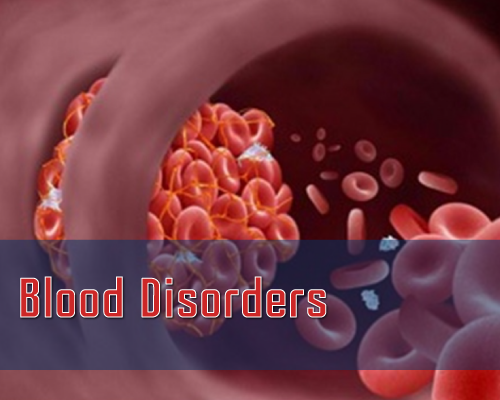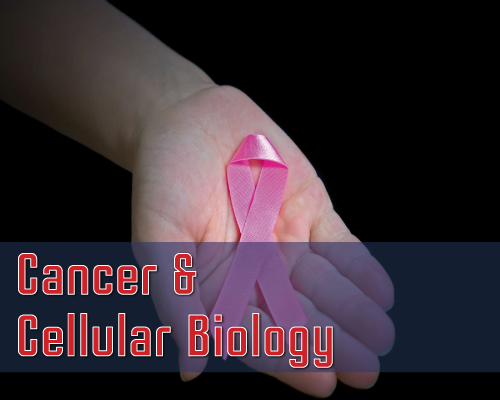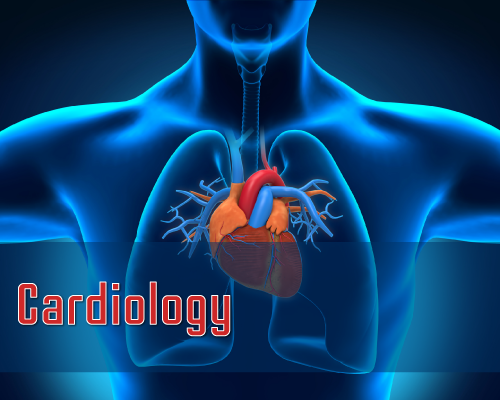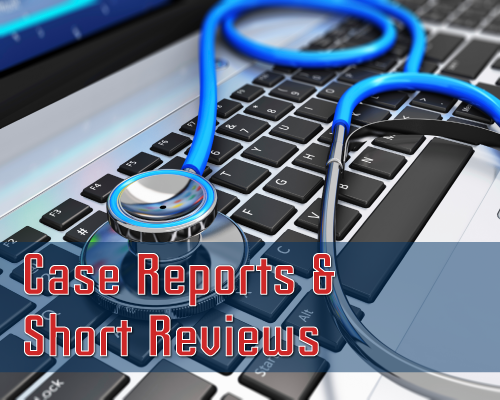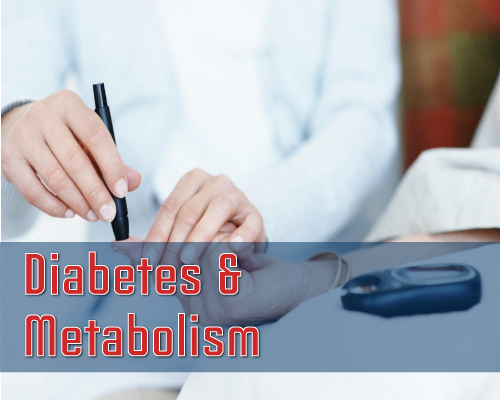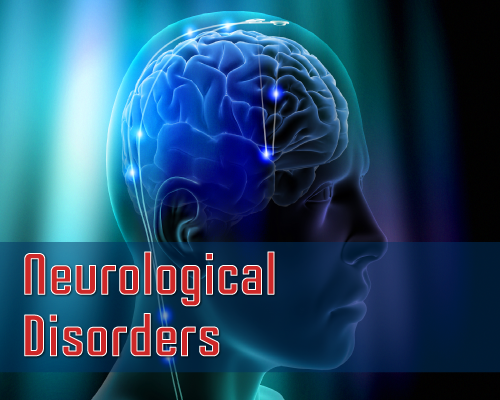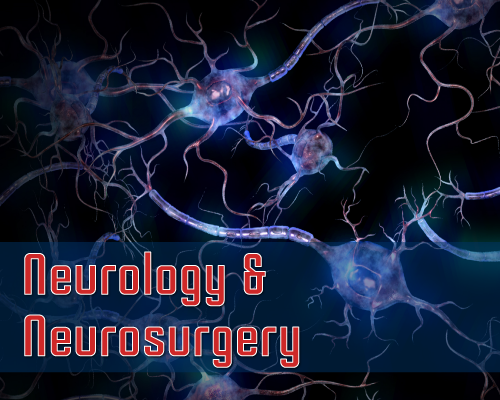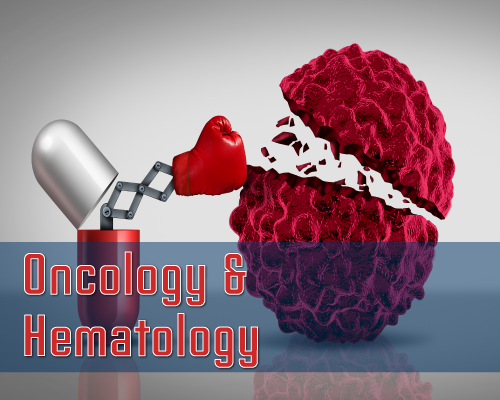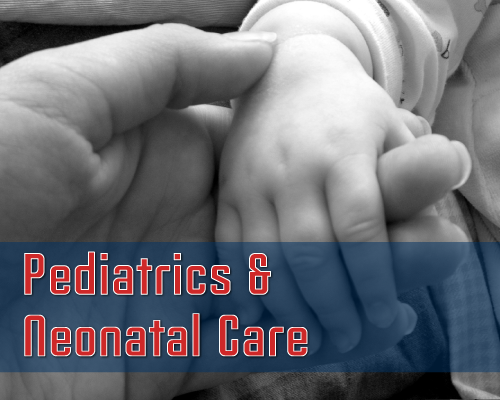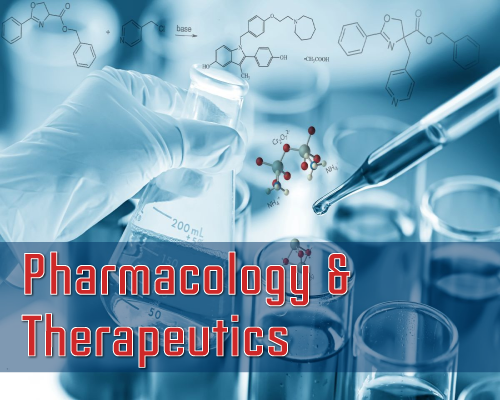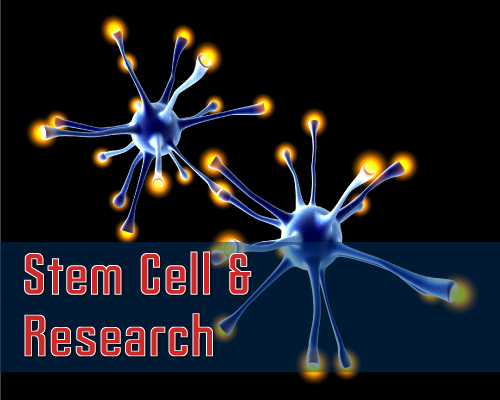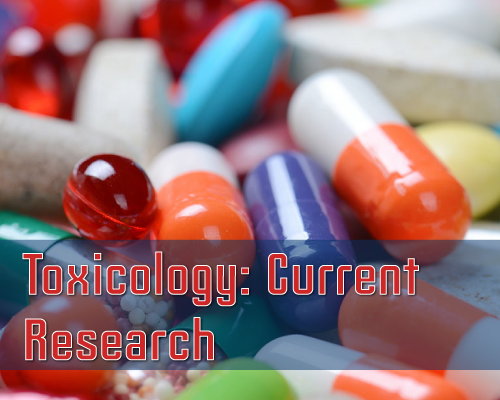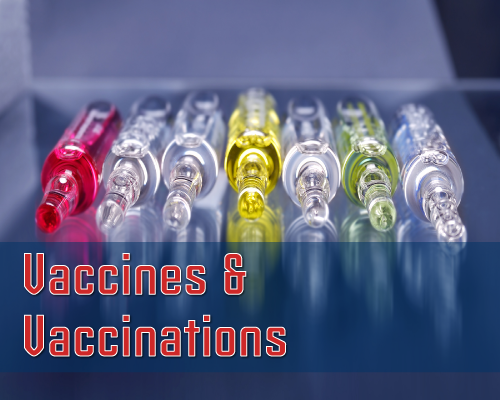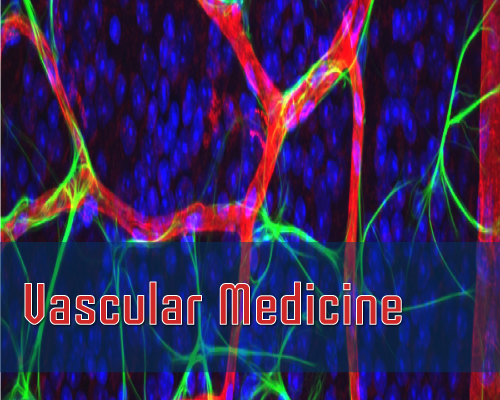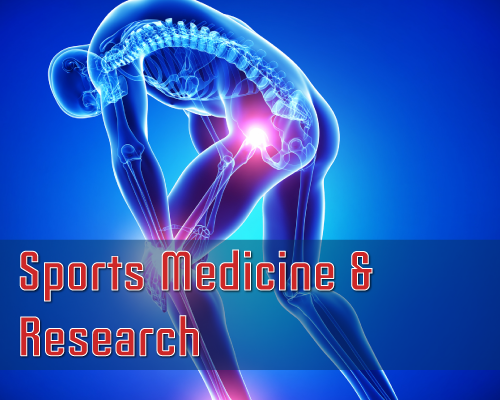Truchuelo MT1*, Vitale MA2, Bettoli V3 and Estebaranz JL4
1Nuestra Senora de America Hospital and at Grupo Pedro Jaen Clinic Madrid, Spain
2Department of Industrial Farmaceutica Cantabria (IFC) at Madrid Spain
3Department of Medical Sciences, University of Ferrara, Arcispedale S. Anna, Ferrara, Italy
4Department Dermatology Az Service at Hospital Universitario Fundacion Alcorcon Madrid, Spain
*Address for Correspondence:Mary T. Truchuelo, Nuestra Senora de America Hospital and at Grupo Pedro Jaen Clinic, Madrid, Spain, Tel: +34606516077; Fax: +34913735088; E-mail: [email protected]
Dates: Submitted: 23 May 2017; Approved: 30 June 2017; Published: 03 July 2017
Citation this article: Truchuelo MT, Vitale MA, Bettoli V, Estebaranz JL. Acne Relapses and Maintenance Therapy: an Update on Definition and Prevention. Sci J Clin Res Dermatol. 2017;2(1): 018-027.
Copyright: © 2017 Truchuelo MT, et al. This is an open access article distributed under the Creative Commons Attribution License, which permits unrestricted use, distribution, and reproduction in any medium, provided the original work is properly cited.
Keywords: Acne; relapses; maintenance phase; acute phase; recurrences; oral isotretinoin
Abstract
Acne vulgaris is a common chronic skin disease involving blockage and/or inflammation of pilosebaceous units. Acne can present as non-inflammatory lesions, inflammatory lesions, or a mixture of both, affecting mostly the face but also the back and chest. Variable rates of relapse after oral isotretinoin treatment have been published. This could be explained by different reasons; one of them is the lack of consensus about the definition of acne relapse after treatment. The objective of this review is to summarize all the different definitions of acne relapse proposed in the literature, in order to find a more reproducible and consistent characterization. This may become a useful tool that allows to compare the results obtained in future studies performed on acne relapses. As acne vulgaris is a dynamic entity that is notoriously difficult to assess over time, quantitative scales would be more indicated to evaluate its severity. In addition, the relapses after treatment are in correlation with the maintenance treatment phase. In this review, we also discuss the concepts of acute and maintenance phase of acne treatment. As the maintenance phase of treatment is a more recent concept, we consider necessary to review the features of this phase such as implantation time, treatment type, duration and efficacy. More studies, with a standardized relapse definition, are needed in order to determine efficacy rates and optimal duration of this phase. In conclusion, this review aims to highlight the need for a valid and reliable definition of acne relapse, especially for its use in research, but also highly valuable in daily clinical practice.
Abbreviations
AP: Acute Phase; BPO: Benzoyl Peroxide Gel; IL: Inflammatory Lesions; Investigator Global Assessment (IGA) index; ISGA: Investigator's Static Global Assessment; MP: Maintenance Phase; NA: Not Available; NIL: Non Inflammatory Lesions; OI: Oral isotretinoin; SGA: Subject's Global Assessment.
Background
Acne vulgaris is an inflammatory, chronic relapsing disease of the pilosebaceous unit. It is characterized by long duration, with flares and remission periods and a high frequency of recurrences even after having received apparently satisfactory treatments [1]. Acne can be considered as an immune-mediated chronic inflammatory skin disease, as the innate immune response of these patients is not able to control P. acnes. It is followed by a Th1-mediated adaptive immune response that becomes self-maintaining independently from the pathogen [2].
As it mainly affects the facial region, the patient who relapses after being treated, suffers from a negative psychological impact, especially if the treatment was by oral route and for a long period, because the expectations then are usually very high.
There are many options available for the acne management, both topical and systemic treatments. As acne etiology has a multifactorial origin, the most common strategy involves the combination of different and complementary mechanisms of action [3]. The S3-guidelines, as well as expert's consensus statements, may be helpful during the election of treatment for a given patient [4-7].
Treatment choice is determined by acne type and grade, prior treatments, individual patient preferences as well as its impact on patient's quality of life and individual characteristics [4-7].
Different treatments, with a variable grade of recommendation are used for the management and treatment of acne. Topical therapies such as benzoyl peroxide;?topical antibiotics (eg, clindamycin and erythromycin);?combination of topical antibiotics and benzoyl peroxide; topical retinoids (eg, tretinoin, adapalene, and tazarotene);?combination of topical retinoids and benzoyl peroxide/topical antibiotic; azelaic acid or dapsone have strength of recommendation (A). Oral antibiotics (tetracyclines, macrolides) and combined oral contraceptives have a high grade of recommendation (A) [6]. Topical salicylic acid has strength of recommendation (B). Chemical peelings (glycolic acid) also have a (B) grade of recommendation, as well as the complementary therapies, such as skin cleansers [6]. Oral Isotretinoin (OI) is one of the most effective drugs in acne treatment, acting on the four-pathogenesis cornerstones: hyperproliferation of follicular keratinocytes, hyperactivity of sebocytes, Propionibacterium acnes colonization and inflammation [8]. The drug produces a rapid and significant inhibition of the sebaceous gland activity within 2 to 4 weeks after therapy onset. The P. acnes population is also decreased during isotretinoin treatment, which may be due to a decrease in the intrafollicular lipids necessary for organism growth. OI also exerts anti-inflammatory activity as well as a regulatory effect on the pattern of follicular keratinization [8].
OI is indicated for severe acne unresponsive to other therapies. In the clinical practice, the prescription of oral isotretinoin has increased in patients with less severe disease or that have not responded successfully to conventional therapy [4]. It is reported to be also prescribed as a first-line treatment in mild acne when it is causing a devastating impact on patient's quality of life [9,10]. In addition, despite the standard recommended dose has been set in 0,5-1 mg/ Kg/ day up to a total cumulative dose of 120-150 mg/ Kg, the current trend is to use lower doses of isotretinoin for a longer period of time10. Relapse rates after OI has been reported to vary from 5% to 65% [11]. The maintenance phase of treatment could decrease the relapse percentage12. The aim of the review is to summarize the different modalities of definition of relapses and maintenance therapy reported in the literature and describe a personal view of the authors on these matters.
Phases of Treatment: Acute and Maintenance
According to published studies, two different phases in the approach of acne patients exist. However, there is still no consensus on the exact definition of both treatment phases.
Acute phase (AP)
Several published studies consider the AP of treatment as corresponding to the first three months regardless of the modality, either topical or oral antibiotic [3,13,14]. In those patients treated with OI, the AP of treatment usually lasts for 6 to 9 months [15]. Through the oral and/or topical treatment of the AP, the response may be either complete disappearance or partial improvement of active lesions in comparison with baseline [16]. Current guidelines recommend OI as a first line treatment in severe papulopustular/ nodular and conglobate acne. Besides, some authors consider OI appropiated for the management of moderate acne that is treatment-resistant or in those cases that generate physical scarring or psychosocial distress [6].
Maintenance phase (MP)
European guidelines include maintenance therapy supported by scarce evidence, according to evidence based medicine [12,13,16-18], but do not indicate if maintenance therapy should begin only after complete clearance of acne or if a partial improvement may be considered acceptable for starting a maintenance treatment [4]. However, different publications assess the benefit of a maintenance phase [12,19]. A standard definition of maintenance is still lacking, but the concept includes the use of appropriate therapeutic agents to ensure that acne remains in remission when the acute phase was satisfactorily finished.
The MP is defined in some studies as the approach after the first three months (in non-OI treated patients) and after six or nine months (in OI treated patients) [12,15,16,20-23]. Therefore, the duration of the MP is variable (3-9 months). Factors such as efficacy, tolerability and patient adherence should be taken into account when considering the duration of this phase. An effective agent should act, at least, on two of the acne pathogenic mechanisms and be able to be used over an extended period. Therefore, a topical retinoid represent an excellent choice during the maintenance therapy [15,20]. Treatments recommended for the maintenance phase as first-line include topical retinoids, such as adapalene 0.1% or tazarotene 0.1% with azelaic acid 15% or 20% as an alternative. Topical or systemic antibiotics are not recommended as maintenance therapy [24].
Relapses
Relapses definition
Unfortunately, there is no agreement in the definition of 'recurrence' or 'relapse' across the different studies, complicating the comparison of conclusions between studies. Usually, in dermatology, the term 'relapse' refers to the appearance of new skin lesions after apparent healing. Nevertheless, this definition can be unclear and vague, because in some cases, a significant improvement of the disease is achieved without reaching the total disappearance of the lesions and, when the lesions arise again, it is interpreted as relapse [25].
Scales of acne severity index
The existence of several scales measuring acne severity [26-35] generates further complications in the consensus about the 'relapse' term. A consensus on its definition would help when comparing the results of different acne relapse studies. In all of them, there may be a significant inter-observer variability, being more homogeneous with trained observers. The most used scales are those grading and counting the acne lesions [26-27]. The iconography provides a register of the patient's evolution throughout the entire course of the therapy and allows a bi-dimensional measurement. However, following this method makes more difficult to observe small or non-inflammatory lesions. The scrutiny of these lesions requires well- trained professionals and the need to standardize the features of the clinical pictures (light, distance, etc). This assessment is included in some of the most widely used severity acne grading scales such as the Modified Scale of Leeds.
Given the variability of acne treatments available and the existence of different measures for assessing its severity, we intend to propose the use of the same acne severity index scales to reach a consensus on the concept of 'maintenance therapy' and 'relapse' definition.
Relapses Incidence and risk factors for relapses after isotretinoin treatment
The association between isotretinoin dose and relapses has not yet been stablished yet as contradictory results were found. Layton mentioned that a total dose inferior to 120 mg/ kg was a prognosis factor for relapse [36]. However, recent studies suggest that isotretinoin dose would not be related to relapse rates [37-39]. Coloe, et al. [40] showed that patients who received a higher cumulative dose were less likely to require a second course of treatment, although a cumulative dose of isotretinoin did not significantly impact acne relapse. The treatment indication regarding dose and duration could be variable and subjective. In our clinical experience, patients affected with moderate acne and treated with OI achieve complete remission at even much lower cumulative doses than those recommended for severe forms (= 120 mg/ kg) and our opinion is in accordance with the more recent studies that found that lower doses were not necessarily related to relapse [37-39].
There are some studies reporting the incidence of acne relapse after stopping OI, some of them with or without maintenance therapy. The relapse rate ranges between 9 to 92%25. Unfortunately, the studies are based on different designs, the definition of relapse is either lacking or different and the number of patients enrolled varies greatly (ranging between 52 and 17,351). The follow-up period also varies, from 1 to more than 5 years (Table 1).
| Table 1: Percentages of relapses after isotretinoin treatment [25]. | |||
| Authors | N' Patients | Total Dose Oral isotretinoin | % Relapses |
| White GM, et al. [47] | 179 | >' 100 mg / Kg - < 100 mg/ Kg | 61% - 92% |
| Quereux G [41] | 52 | 108-180 mg/ Kg | 52% |
| Al-Mutairi N, et al. | 117 | 0,5 ' 1 mg/ Kg/ day for 6-28 weeks | 49% |
| Coloe J, et al. [40] | 102 | 216 ' 268 mg/ Kg | 45% |
| Lehucher-Ceyrac D et al | 237 | 113-148 mg/ Kg | 14% |
| Azoulay L, et al. [11] | 17.351 | > 2.450 mg | 41% |
| Layton AM, et al. [36] | 88 | 35-50 mg/ Kg | 30%-39% |
| Liu A, et al. [49] | 405 | >150 mg/ Kg | 23% |
| Stainforth JM, et al. [46] | 299 | > 0.5 mg/ Kg/day vs < 0.1 mg/ Kg/ day | 17% - 23% |
| Harms M, et al. [44] | 86 | 233 mg/ Kg | 15% |
| Borghi A, et al. [12] | 150 | 81 mg/ Kg | 9% |
To date, regarding the studies published about post-isotretinoin relapses, the publication of Azoulay, et al. [11] presents the largest number of patients enrolled (17,351 patients), and showed that 41% (7,100 patients) had relapses, defined by those patients who required either a second isotretinoin treatment or other anti-acne medication. It is important to stand out that more than half of the patients who relapse (4,100 patients) require a second course of OI (26%) (Table 1) [41]. Table 2 shows a list of factors associated with relapses.
| Table 2: Predictor factors for relapses after oral isotretinoin treatment. |
| Factors associated with relapses |
| ' Male sex [25] |
| ' Under 16 years old [25] |
| ' Living in urban area [25] |
| ' Cumulative doses of Isotretinoin: less than 2.450 mg [25] |
| ' Isotretinoin time duration treatment: less than 121 days [25] |
| ' Seborrhoea after treatment [25] |
| ' High number of inflammatory lesions [41] |
| ' Familiar history of acne [41] |
| ' Trunk acne lesions [41] |
| ' Smoking [41] |
| ' Older age (women over 25) [11] |
| ' Polycist ovarian syndrome [11] |
| ' Absence of maintenance treatment with topical retinoids [40] |
The relapses after treatment during maintenance therapy and without maintenance treatment
We will analyze the relapses incidence after active treatment with OI or with topical and/ or oral therapy, with or without maintenance therapy, in order to stablish the hypothetical relation between maintenance treatment and relapse rate.
Summary of the studies published about relapses after OI without maintenance therapy
The studies showed at Table 3 reflect that after OI without maintenance treatment, there are more and earlier relapses in those patients who had received lower doses and shorter time of treatment. Most authors define relapses after OI as acne presence demanding an under-prescription medication after a course of OI. Percentages of relapses have a great variability between 15% to 92% [42-52].
| Table 3: Relapses after OI without maintenance therapy. | |||||
| Publishing | # | Mg/Kg/day | Follow-up | Recurrence Definition | Results |
| Jones DH, et al. [38] | 76 | 0.1 mg/ kg 0.5 mg/ kg 1.0 mg/ kg |
16 weeks treatment 16-week follow-up |
Not available | 1.0 mg/ kg dose had more treatment |
| Strauss JS, et al. [42] | 150 | 0.1 mg/ kg 0.5 mg/ kg 1.0 mg/ kg |
20 weeks treatment 8- to 12-week follow up Patient questionnaire at 12'18 months |
Not available | 42% patients who received 0.1mg/kg/d required other course of treatment 20% patients who received 0.5mg/kg/d required other course of treatment 10% patients who received 1.0mg/kg/d required other course of treatment |
| Wokalek H, et al. [43] | 176 | 0.1 mg/ kg 0.5 mg/ kg 1.0 mg/ kg |
12 weeks treatment 17-month follow up |
Not available | First relapse in 1mg/kg/d group occurred 6 months after end of therapy All patients were in remission at 5 months 6 out of 26 patients had to restart acne treatment First relapse in 0.5mg/kg/d group occurred after 5 months First relapse in 0.1mg/kg/d group occurred after 2 months |
| Harms M, et al. [44] | 86 | Until 233 mg/ Kg | 6-47 months (mean follow-up duration of 14 months after receiving oral isotretioin). | Not available | 15% |
| Cunliffe WJ, et al. [45] | 250 | 0.5 mg/ kg 1.0 mg/ kg |
4 months treatment 12- to 50-month follow up |
Not available | Relapse rates: ' 42% with 0.5mg/kg/d ' 13% with 1mg/kg/d Significant differences between both doses were observed.p<0.01 |
| Layton AM, et al. [36] | 88 | 0.5 mg/ kg 1.0 mg/ kg |
16 weeks treatment 10-year follow up |
Not available | 39% relapsed and required oral antibiotics or further isotretinoin 82% patients who received <120mg/kg cumulative dose relapsed vs. 30% who were given a larger dose (P<0.01) Majority of patients relapsed within 3 years of isotretinoin therapy 78% patients relapsed within 18 months |
| Stainforth JM, et al. [46] | 299 | 0.1 mg/ kg 0.5 mg/ kg 1.0 mg/ kg |
16 weeks treatment 5-year follow up |
Not available | 69% patients taking 0.1mg/kg/d isotretinoin who were followed relapsed 88% patients requiring more than 2 courses of isotretinoin were treated with 0.1mg/kg/d or 0.5mg/kg/d isotretinoin Only 9.5% patients needing >2 courses of isotretinoin were treated with 1mg/kg/d |
| White GM, et al. [47] | 179 | Examined total cumulative dose |
20 weeks treatment 3-year follow up |
Defined by receiving an antiacne medication: Required topical therapy, oral antibiotics plus topical therapy or required OI | 34.6% patients had no recurrence 8% patients receiving <90mg/kg isotretinoin had no recurrence 40'50% patients receiving >110mg/kg isotretinoin had no recurrence Chance of recurrence is 8.2 times for patients taking a total dose of <100mg/kg vs. patients taking a total dose of >100mg/kg |
| Haryati I, et al. [48] | 193 | Examined total cumulative dose |
10 years | Defined by receiving an antiacne medication: Required topical therapy, oral antibiotics plus topical therapy or required OI | Within the patient with relapses: 17.5% required topical therapy 3.3% required oral antibiotic plus topical therapy 19.6% required a second course of isotretinoin Total percentage of relapses: Total dose taken and duration of treatment' was 103.5mg/kg during 6.7 months for patients who required further therapy and' 118.55mg/kg during 7.41 months for patients who were cured after one course |
| Quereux G, et al. [41] | 52 | initial dose 0.3 to 1 mg/ kg/ day. Adapted according to tolerability and clinical outcome. Total acumulative dosis >120 mg/ Kg Average dosis by day 0,36-0,1 mg/ Kg |
2 years | Relapse was de?ned by an increase in the number of lesions after isotretinoin withdrawal, with a score of 2 or more for super?cial in? ammatory lesions (more than 4 papules or pustules), with a score of 3 or more for retentional lesions (more than 9 open or closed comedones) or' with the presence of 1 or more nodules, which represents a deterioration in acne suf?cient to merit a treatment. |
52% patients relapsed |
| Azoulay L, et al. [11] | 17.351 | >2.450 mg <2450 mg |
Inclusion: 1984-2003 48 802 person-years of follow-up |
Defined by receiving an antiacne medication | 41% patients relapsed (lower relapse rates with higher doses and longer treatment period, 121 days more than the average). Most of the Second isotretinoin treatments were dispensed within the first 2 years after the end of the first treatment |
| Liu A, et al. [49] | 405 | Isotretinoin for at least 150 mg/ Kg | Within the first 2 years | Relapses severe enough for the patient request further medical management | 23%' patients relapsed |
| Coloe J, et al. [50] | 102 | Oral Isotretinoin for at least 4 months | Al least 1 year follow-up | Defined as acne requiring 'a prescription medication after a course of isotretinoin; ''retrial'' was defined as recurrent acne severe enough to need a second course of isotretinoin. | 45% patients relapsed |
Summary of the studies published about relapses during the maintenance phase after receiving OI
Table 4 summarizes the studies of relapses during the maintenance phase after OI treatment [12,37,53,54,56,57]. Some authors of this paper tested the efficacy of adapalene 0.1% cream as a maintenance therapy after acne remission obtained with an OI course in 2 open-label prospective non-randomized studies. In the first study, 74 patients affected with moderate to severe acne were treated with adapalene 0.1% cream in a 12-month maintenance therapy and then followed up for a further 6 months without treatment. In the second study, 139 patients affected with mild to moderate acne were treated with OI until complete remission. Then the patients underwent a 12-month maintenance therapy with adapalene 0.1% cream. In both studies, relapse has been defined as the occurrence of acne with a severity grade = 0.5 as per Leeds grading scale and/or requiring systemic treatment. Rates of acne recurrence observed were 6.7% and 9.35%, respectively [37,53]. This author also published a study with 68 patients who remained in the maintenance phase during one year with daily application of fixed-dose adapalene 0.1%- benzoyl peroxide gel (BPO) 2.5% gel. 2.94% of patients experienced a protocol-defined relapse [54].
| Table 4:' Relapses during topical maintenance phase after OI. | ||||
| Author | N | Maintenance therapy | Relapse Definition | Relapses (%) |
| Borghi [37] | 74 | Adapalene 0,1% cream 12 months | > 0,5 Leeds and / or requiring systemic treatment | 6,7% of patients relapsed |
| Bettoli [53] | 139 | Adapalene 0,1% cream 12 months | > 0,5 Leeds and/ or requirement systemic treatment | 9,35% of patients relapsed |
| Bettoli [54] | 68 | Adapalene 0,1-BPO 2,5% 12 months | > 0,5 Leeds and or requiring systemic treatment | 2,94% of patients relapsed |
| Bettoli [12] | 40 | Biretix' 12 months | > 0,5 Leeds and or requiring systemic treatment | 15,38%' of patient relapsed |
| Vender [56] | 20 | Tretinoin 0,04% gel, 24 weeks Vs vehicle |
ISGA, SGA | Mean lesions number 38.7% lower after retinoid treatment vs vehicle treatment |
| Truchuelo [57] | 32 | Biretix' vs vehicle, 3 months | Counting of lesions | 17% of patients relapsed after biretix treatment vs 43% after vehicle treatment. |
Treatment failures with isotretinoin in female patients are frequently related to endocrinological dysfunctions, eg: polycystic ovary syndrome (PCOS). Hormonal interventions are prescribed for female patients with polycystic ovary syndrome and acne, regardless of serum levels of androgens. Oral contraceptive pill therapy is the first-line therapy for hirsutism and acne in women with PCOS. The estrogenic component suppresses luteinizing hormone and ovarian androgen production, enhances sexual hormone binding globulin (SHBG) production in the liver, thus reducing free testosterone. The least androgenic progestins (norgestimate and desogestrel) are most helpful therapeutically, whereas the most androgenic progestins (norgestrel and levonorgestrel) should be avoided. Isotretinoin is useful in the management of acne of PCOS. Recurrences rates after OI treatment in PCOS patients, have not been published yet. The physician must be aware that isotretinoin has no efficacy in the treatment of hirsutism or androgenic alopecia [55].
In another study, Vender compared maintenance treatment efficacy of 0.04% tretinoin gel (microspheres) versus vehicle for 24 weeks in 20 patients previously treated with oral isotretinoin. The mean number of lesions in the treated group at the end of the maintenance phase was a 38.7% lower than the vehicle group. In addition, the ISGA (Investigator's Static Global Assessment) showed better results in the tretinoin group during the entire maintenance period. The SGA (Subject's Global Assessment) which was well correlated with the ISGA, also scored better results in the treated arm [56].
Truchuelo et al conducted a proof of concept, prospective, randomized, double-blind and vehicle-controlled study with Biretix', a cosmetic combination of two retinoids (hidroxy pinacolone retinoate and retinol in glycospheres), during the maintenance phase. The study was conducted in 30 patients treated with OI previously and who reached an average dose of isotretinoin of 68.34 mg/ kg. The retinoid combination was used on a split-face model, applying the active product to one side of the face and the vehicle to the other, once daily for 3 months. The mean of follow-up was 6 months since treatment discontinuation and is important to highlight that relapses were defined as the increase in the number of any sort of lesion (inflammatory or non-inflammatory) [57]. On the treated side, only 17% (5 out of 30) showed relapses or worsening of initial condition vs 43% (13 out of 30) on the vehicle side (p = 0,021). The improvement perceived by the researcher was significantly better on the treated side than the vehicle (p < 0,01). Tolerance was excellent in all patients. The tolerance of the MP treatment is the key factor of success in order to maintain patient's adherence to treatment.
Confirming this preliminary results, Bettoli et al developed a study including 40 patients who had been treated with OI in the acute phase. The treatment reached a total OI accumulated dose of 77 mg/Kg. During the MP, patients were treated with Biretix'. The recurrence rate was 15% after one year of treatment. The results support the improvement in recurrence rates achieved with topical retinoids [12]. The results observed in the four studies that had one year of maintenance therapy, showed a lower rate of relapses (15% or less) when the MP starts immediately after finishing the course with OI.
Summary of studies published about relapses during maintenance therapy after non-isotretinoin treatment
Table 5 summarizes the studies with maintenance regimen after non-OI treatment acute phase treatment. Topical adapalene is the most frequently used agent for the MP according to published studies.
| Table 5: Studies in which a maintenance treatment was scheduled after the therapy of the acute phase (non-OI treatment) of acne. The table relates the relapses or the increase in count lesion number [13-15,22,23,58-61]. | |||||
| Author | N' patients | Treatment | Maintenance | Relapse definition | Percetage of relapses or total lesion reduction |
| Zhang, et al. [23] | 241 | Clindamycin solution 1% + adapalene gel 0,1% or clindamycin solution 1% alone, 12wk | Adapalene gel 0,1% 12 wk | Mean percentage increment in lesion count (Response according to 5 point scale, Severity according to modified international acne grading system) | |
| 41% reduction of total lesions with adapalene vs 91% increase in vehicle patients | |||||
| Thielitz, et al. [58] | 49 | Adapalene 0,1% gel + BPO 2,5% gel, 8wk | Adapalene gel 0,1% vs vehicle 12 wk | ND | Adapalene daily or every other day Significantly control the comedone count reduction |
| Thieltz, et al. [59] | 36 | Adapalene 0,1% gel 12wk | Adapalene 0,1% vs Azelaic acid, 9 month vs no maintenance | If' unable to maintain 50% improvement' | |
| Azelaic acid 12wk | 27% relapses after adapalene' treatment vs 47% relapses after azelaic treatment. | ||||
| Thiboutot, et al. [15] | 253 | Doxycline 100 mg + adapalene 0,1% gel, 12wk | Adapalene gel 0,1% vs vehicle 12wk | If' unable to maintain 50% improvement (response according to 6 point scale; severity according to '15 IL o 15-100 NIL | |
| 25% relapses after adapalene treatment ( 75% mantained the response) vs 46% relapses after vehicle treamten (only 54% mantained the response) | |||||
| Alirezai, et al. [14] | 136 | Lymecycline 300 mg + adapalene 0,1% gel, 12wk | Adapalene gel' vs vehicle 0,1% 12 wk | If unable to maintain 50% improvement (response according to 7 point scale and severity ussing leeds revised acn' grading system O'Brien) | |
| 15,3% relapses after adapalene treatment (only 84,7% maintenance success rate ) vs 36,5% relapses after vehicle treatment (only 63.5% maintenance success rate) | |||||
| Cassano, et al. [61] | 419 | Lymecycline 300 mg + adapalene 0,1% gel | Adapalene gel 0,1% 12 wk | NA | 5% patients relapsed |
| Leyden, et al. [13] | 110 | Minocyline 200 mg + tazarotene 0,1% gel | Tazarotene 0,1% gel vs minocycline vs both, 12 wk | If' unable to maintain ' 70% improvement (response according to 7 point scale, severity according to' 10'100 facial NIL, 25'60 facial IL, = 2 nodular cystic lesions) | 11% patients relapsed with tazarotene treatment vs 13% with'''''''' minocyline. |
| No statistical significance between tazarotene alone and its combination with oral minocycline. | |||||
| Gollnick, et al. [60] | 71 | Minocycline 100 mg + azelaic acid 20% cream vs OI | Azelaic acid 20% cream for 36 weeks | Increase in median lesion count (response if number of deep inflammatory lesions decreased by = 75%, and efficacy of treatment was rated by patients as 'very good'. Severity according to Leeds scale. | Increased slightly from 13 to 17 comedones & 3 to 7 papules and pustules vs slight reduction in previous OI 8 to 7 comedones and no changes in papulopustules. |
| Poulin, et al. [22] | 243 | Adapalene 0,1% - BPO 2,5% gel + doxycycline 100 mg or vehicle + doxycycline 100 mg doxycycline 100 mg | Adapalene 0,1%-BPO 2,5% gel vs vehicle for 24 weeks | If unable to maintain at least 50% of improvement after active phase. Severity according to Investigators Global Assessment 6 point scale. | 21,1% patient relapsed' with adapalene-BPO(78.9% maintenance success rate) 54,2 patients relapsed with vehicle ( 45.8% maintenance success rate) |
The use of topical adapalene for 12 weeks after an OI course reduces significantly the recurrence rates [16]. Tazarotene and azelaic acid may achieve improvement on recurrences with a minor impact than adapalene [7]. As adherence to treatment is an important key point in long-term therapies, this new retinoids combination (hidroxypinacolone retinoate and retinol in glycospheres), with very good tolerability outcomes, represents a novel option in the maintenance therapy. As shown in table 5, different percentages of relapses have been reported, ranging between 5% to 25%. Adapalene is the most frequently used drug. It is our understanding that the maintenance phase after non- OI treatment, could be shorter than the suggested year of maintenance after OI treatment. Lower percentages of recurrences were achieved with 3 months of maintenance therapy after non-OI treatment.
Our Experience about Relapses and Maintenance Therapy
We suggest to differentiate the concept of relapse based on whether the treatment was topical, oral antibiotics or a combination of both of them; or if it was the 'gold standard' oral isotretinoin.
Relapses after Non-OI Treatment
Some authors (as summarize tables 3 and 4) define the term relapse on a re-treatment need basis (either with topical treatment or with oral isotretinoin) after prior healing [41,11,47,49-51]. Bettoli [53,54] had previously defined acne recurrence as the increase of > 0.5 points in Leeds scale or the need of systemic treatment. Other authors define this term based on grading scales such as worsening by the Investigator Global Assessment (IGA) index [22] or worsening by Investigator's Static Global Assessment (ISGA) or Subject Global Assessment (SGA) [56]. However, these definitions are ambiguous and subjective and do not allow to unify concepts, making difficult, if not impossible, to reach adequate conclusions between different studies. After a thorough review of the different methods to assess 'acne relapses' in several studies published in Pubmed, to our knowledge, we believe that one precise and objective definition for relapse would be the inability to keep a percentage of improvement in the count of lesions of at least 50% of the percentage improvement obtained after the acute treatment phase. This definition has been used by different authors, although with different severity scales, and we propose to take it as the standard definition for further studies [3,13-15,21-23,59]. This is a quantitative evaluation, different from others only based on subjective criteria. We strongly believe that it is necessary to include an MP of adjustable duration according to the patient's needs. If the relapse shows up during the MP, it would be necessary to switch to another therapy of MP.
In our opinion, the maintenance treatment after receiving topical therapy should last at least three months; therefore, the evaluation of a hypothetical relapse should be made at least, after this period. As it has been shown, there are significant differences in the response during this period [22] and it has been observed that this improvement continues [61].
Relapse after treatment with oral isotretinoin
As most of the relapses occur within the first 18 months after OI discontinuation, a 2-year follow-up could be adequate for accurate detection of acne relapses.
Some authors define relapse as increment in = 0,5 Leeds and/ or requiring systemic treatment after acute treatment [53,54,56,57]. Other authors defined relapse as the need of any type of treatment (topical or systemic) after OI course. We believe that Leeds scale is the best one to evaluate the acne severity. However, to assess relapses after OI treatment, we believe it should be easier and more practical just quantify the number of lesions and compare it with the number at the end of the acute phase of treatment. In the case of OI, we propose to consider a relapse after OI if the patient is unable to maintain at least the 80% of the improvement achieved after the acute phase. To our practical experience, the concept of relapse defined as 'unable to maintain the 50% of improvement after active treatment' would not be sensitive enough in patients who performed OI treatment. These patients of the achieve a complete response and the reappearance of a few new lesions is a source of emotional stress may require a new treatment. We also believe that relapse definition after OI, cannot be made only based on the need of new treatment either topical or systemic, as this need is a subjective concept which may vary between dermatologists and patients point of view. Regardless of whether the increase is a few or many lesions, as there is an important psychological impact in these patients, the new treatment (topical or oral) should be indicated. These reasons exposed above reinforce why the MP should be always implemented after an OI course.
This definition is also a claim to the standard application of a maintenance phase immediately after stopping the treatment with oral isotretinoin. The duration of this MP needs to be further elucidated with more clinical trials.
Within this context, the MP should be introduced after the discontinuation of OI and be maintained at least for one year [50]. Since there are a new retinoid combination (Biretix') with minimal side effects, high tolerance and therefore high compliance by the patient, this maintenance therapy may be adequate for any patient who has completed a course with OI. Certainly, it would be strongly recommended in patients considered at high risk of relapse after OI [12,57].
We believe that the concept of relapse is directly correlated with maintenance therapy as we reported in the literature. If maintenance therapy after AP treatment is stablished in regular practice, the possibilities to relapse would be definitely lower.
Conclusions
The concept of acne relapse is in close relationship with MP. An MP with a topical and well-tolerated retinoid that allows patient's adherence would decrease the recurrence rates after active acne treatment.
As it is essential to standardize the definition of severity of acne as well as the response and relapse concept to be able to design comparable studies, we propose the Leeds Revised Acne Grading System O'Brien as the quantitative scale of election for classify the severity grade of acne. For determining the presence of recurrences we propose to use a quantitative scale instead. We claim the need to differentiate between those patients treated with OI during the AP, where relapse would be considered if unable to maintain at least 80% of the improvement achieve after the active treatment, from those who received non-OI treatment, where relapse would be considered if the patient is unable to maintain 50% of improvement achieved after the acute phase.
Declarations
Competing interests
M.T. Truchuelo: declares to be a dermatologist with occasionally works as is the scientific advisor to Industrial Farmaceutica Cantabria (IFC).
M. Vitale: declares to be a dermatologist MD Ph.D working for the Medical Department of Industrial Farmaceutica Cantabria (IFC).
V. Bettoli and JL. Lopez-Estebaranz declares that they have no competing interests.
Funding
None funding sources were received for the writing of the present study. Industrial Farmaceutica Cantabria (IFC) is financing the article-processing charges.
Authors' contribution
MT participated in the conception and design process. Also reviewed and analyzed the articles published in the literature and extracted data. Interpreted all the data.
MV participated in the conception and design process. Also reviewed and analyzed the articles published in the literature and extracted data. Interpreted all the data.
VB: Interpreted all the data and revised the manuscript critically.
JE: Interpreted all the data and revised the manuscript critically.
All authors read and approved the final manuscript.
Acknowledgements
The authors acknowledge Industrial Farmaceutica Cantabria for the contribution in financing the article- processing charges.
References
- Dawson AL, Dellavalle RP. Acne vulgaris. BMJ. 2013; 346: 2634. https://goo.gl/a5TB5c
- Gollnick H, Cunliffe WJ, Berson D, Dreno B, Finlay A, Leyden JJ, et al. Global Alliance to Improve Outcomes in Acne: Management of acne: a report from a Global Alliance to Improve Outcomes in Acne. J Am Acad Dermatol. 2003; 49: 1-37. https://goo.gl/tz3wwB
- Antiga E, Veraldi A, Bonciani D, Bonciolini V, Carponi M, Fabbri P. Acne: a new model of immune-mediated chronic in ammatory skin disease. G Ital Dermatol Venereol. 2015; 150: 247-54. https://goo.gl/w4CdPf
- Nast A, Dr'no B, Bettoli V, Bukvic Mokos Z, Degitz K, Dressler C, et al. European evidence-based (S3) guideline for the treatment of acne - update 2016 - short version. J Eur Acad Dermatol Venereol. 2016; 30: 1261-8. https://goo.gl/qd4vxa
- Gollnick HP, Bettoli V, Lambert J, Araviiskaia E, Binic I, Dessinioti C, et al. A consensus-based practical and daily guide for the treatment of acne patients. J Eur Acad Dermatol Venereol. 2016; 30: 1480-90. https://goo.gl/2QJysz
- Zaenglein AL, Pathy AL, Schlosser BJ, Alikhan A, Baldwin HE, Berson DS, Bowe WP, et al. Guidelines of care for the management of acne vulgaris. J Am Acad Dermatol. 2016; 74: 945-73. https://goo.gl/f8nwrd
- Strauss JS, Krowchuk DP, Leyden JJ, Lucky AW, Shalita AR, Siegfried EC, et al. Guidelines of care for acne vulgaris management. J Am Acad Dermatol. 2007; 56: 651-663. https://goo.gl/ivCtuz '''
- De D, Kanwar A. Combination of Low-Dose Isotretinoin and Pulsed Oral Azithromycin in the Management of Moderate to Severe Acne. Clin Drug Investig. 2011; 31: 599-604. https://goo.gl/5H58c4
- Berk DR. Effectiveness of conventional low-dose and intermittent oral isotretinoin in the treatment of acne: a randomized controlled comparative study: comment. Br J Dermatol. 2011; 165: 205. https://goo.gl/BvNwDE
- Goulden V, Clark SM, McGeon C, Cunliffe WJ. Treatment of acne with intermittent isotretinoin. Br J Dermatol. 1997; 137: 106-08. https://goo.gl/ka9ryY
- Azoulay L, Oraichi D, Berard A. Isotretinoin therapy and the incidence of acne relapse: a nested case-control study. Br J Dermatol. 2007; 157: 1240'1248. https://goo.gl/nK9zjc
- Bettoli V, Zauli S, Borghi A, Tonni G, Ricci M, Bertoldi A, Virgili A. Efficacy and safety of a 12-month treatment with a combination of hydroxypinacolone retinoate and retinol glycospheres as maintenance therapy in acne patients after oral isotretinoin. Giornale italiano di dermatologia e Venereologia 2016. Feb.18 PMID: 26889724 (awaiting for publication). https://goo.gl/vKy3sA
- Leyden J, Thiboutot DM, Shalita AR, Webster G, Washenik K, Strober BE, et al. Comparison of tazarotene and minocycline maintenance therapies in acne vulgaris: a multicenter, double-blind, randomized, parallel-group study. Arch Dermatol. 2006; 142: 605'612. https://goo.gl/3JHvGD
- Alirezai M, George SA, Coutts I, Roseeuw DI, Hachem JP, Kerrouche N, et al. Daily treatment with adapalene gel 0.1% maintains initial improvement of acne vulgaris previously treated with oral lymecycline. Eur J Dermatol. 2007; 17: 45'51. https://goo.gl/i7jzUa
- Thiboutot DM, Shalita AR, Yamauchi PS, Dawson C, Kerrouche N, Arsonnaud S, et al. Adapalene gel, 0.1%, as maintenance therapy for acne vulgaris: a randomized, controlled, investigator-blind follow-up of a recent com- bination study. Arch Dermatol. 2006; 142: 597'602. https://goo.gl/a4UQ9g
- Dressler C, Rosumeck S, Nast A. How Much Do We Know about Maintaining Treatment Response after Successful Acne Therapy? Systematic Review on the Efficacy and Safety of Acne Maintenance Therapy. Dermatology. 2016; 232: 371-80. https://goo.gl/BQFUqL
- Gollnick HP, Graupe K, Zaumseil RP. Comparison of combined azelaic acid cream plus oral minocycline with oral isotretinoin in severe acne. Eur J Dermatol. 2001; 11: 538'544. https://goo.gl/TX1XKd '
- Oprica C, Emtestam L, Hagstr'mer L, Nord CE. Clinical and microbiological comparisons of isotretinoin vs. tetracycline in acne vulgaris. Acta Derm Venereol. 2007; 87: 246-54. https://goo.gl/NJjWcj
- Kim Su Youn and Falk R Ochsendorf. New Developments in Acne Treatment: Role of Combination Adapalene-benzoylperoxide. Ther Clin Risk Manag. 2016; 12: 1497'1506. https://goo.gl/J8y95U
- Thiboutot D, Gollnick H, Bettoli V, Dr'no B, Kang S, Leyden JJ, et al. Global Alliance to Improve Outcomes in Acne: New insights into the management of acne: an update from the Global Alliance to Improve Outcomes in Acne group. J Am Acad Dermatol. 2009; 6: 1'50. https://goo.gl/So1goQ
- Zane L. Acne maintenance therapy: expanding the role of topical retinoids? Arch Dermatol. 2006; 142: 638'640. https://goo.gl/5on8dG
- Poulin Y, Sanchez NP, Bucko A, Fowler J, Jarratt M, Kempers S, et al. A 6-month maintenance therapy with adapalene-benzoyl peroxide gel prevents relapse and continuously improves efficacy among patients with severe acne vulgaris: results of a randomized controlled trial. Br J Dermatol. 2011; 164: 1376' 1382. https://goo.gl/5Uto1r
- Zhang JZ, Li LF, Tu YT, Zheng J. A successful maintenance approach in inflammatory acne with adapalene gel 0.1% after an initial treat- ment in combination with clindamycin topical solution 1% or after monotherapy with clindamycin topical solution 1%. J Dermatolog Treat. 2004; 15: 372'378. https://goo.gl/vU8Bb7
- Dreno B, Layton A, Zouboulis C, Estebaranz JL, Zalewska-Janowska A, Bagatin E, Zampeli VA, Yutskovskaya Y, Harper JC. Adult female acne: a new paradigm. J Eur Acad Dermatol Venereol. 2013; 27: 1063-1070. https://goo.gl/5gXimc '
- Morales Cardona CA, S'nchez Vanegas G. Acne relapse rate and predictors of relapse following treatment with oral isotretinoin. Actas Dermosifiliogr. 2013; 104: 61-6. https://goo.gl/jxnM8Y
- Adityan B, Kumari R, Thappa DM. Scoring systems in acne vulgaris. Indian J Dermatol Venereol Leprol. 2009; 75: 323-6. https://goo.gl/r5m4Ls
- Witkowski JA, Parish LC. The assessment of acne: An evaluation of grading and lesion counting in the measurement of acne. Clin Dermatol. 2004; 22: 394-7. https://goo.gl/bx62Cj
- Lucky AW, Barber BL, Girman CJ, Williams J, Ratterman J, Waldstreicher J. A multirater validation study to assess the reliability of acne lesion counting. J Am Acad Dermatol. 1996; 35: 559-65. https://goo.gl/dSbu33
- Barratt H, Hamilton F, Car J, Lyons C, Layton A, Majeed A. Outcome measures in acne vulgaris: systematic review. Br J Dermatol. 2009; 160: 132'136. https://goo.gl/9n42h1 '
- Webster G. Mechanism-based treatment of acne vulgaris: the value of combination therapy. J Drugs Dermatol. 2005; 4: 281-8. https://goo.gl/5bMJvn
- Wilson R.G. Office application of a new acne grading system. Cutis. 1980; 25: 62. https://goo.gl/U3XvaF
- Lucchina LC, Kollias N, Gillies R, Phillips SB, Muccini JA, Stiller MJ, et-al. Fluorescence photography in the evaluation of acne. J Am Acad Dermatol. 1996; 35: 58-63. https://goo.gl/j6Afw5
- Rizova E, Kligman A. New photographic techniques for clinical evaluation of acne. J Eur Acad Dermatol Venereol. 2001; 15: 13-8. https://goo.gl/NXCtPt
- Guerra Tapia A, Puig Sanz L, Conejo Mir J, Perez T, Iglesias C, Zsolt I. Feasibility and reliability of the Spanish version of the Leeds Revised Acne Grading Scale. Actas Dermosifiliogr. 2010; 101: 778-84. https://goo.gl/czEEjD
- Guidance for Industry Acne Vulgaris: Developing Drugs for Treatment. 2005 J:\GUIDANC\6499dftcln3.doc. U.S. Department of Health and Human Services Food and Drug Administration Center for Drug Evaluation and Research (CDER) September 2005 Clinical/Medical. https://goo.gl/H2cjJR
- Layton AM, Knaggs H, Taylor J, Cunliffe WJ. Isotretinoin for acne vulgaris-10 years later: a safe and successful treatment. Br J Dermatol. 1993; 129: 292'296. https://goo.gl/cT8a6u
- Borghi A, Mantovani L,Minghetti S,Giari S,Virgili A,Bettoli V. Low-cumulative dose isotretinoin treatment in mild-to-moderate acne: efficacy in achieving stable remission. J Eur Acad Dermatol Venereol. 2011; 25: 1094-8. https://goo.gl/hZpkT1
- Jones DH, King K, Miller AJ, Cunliffe WJ. A dose-response study of I3-cis-retinoic acid in acne vulgaris. Br J Dermatol. 1983; 108: 333'343. https://goo.gl/WZ9kE5
- Sardana K, Garg VK. Efficacy of low-dose isotretinoin in acne vulgaris Indian J Dermatol Venereol Leprol. 2010; 76: 7-13. https://goo.gl/1FUsv1
- Coloe J, Du H, Morrell DS. Could higher doses of isotretinoin reduce the frequency of treatment failure in patients with acne? J. Am. Acad. Dermatol. 2011; 65: 422-3. https://goo.gl/Cpt1Xp
- Quereux G, Volteau C, N'Guyen Jm. Prospective study of risk factors of relapse after treatment of acne with oral isotretinoin. Dermatology. 2006; 212:168-76. https://goo.gl/EnYHgo
- Strauss JS, Rapini RP, Shalita AR, Konecky E, Pochi PE, Comite H, et al. Isotretinoin therapy for acne: results of a multicenter dose-response study.J Am Acad Dermatol. 1984; 10: 490'496. https://goo.gl/r8YrJo
- Wokalek H, Hennes R, Schell, Vogt HJ. Retinoid Therapy: A Review of Clinical and Laboratory Research. Lancaster, England; MTP Press Limited: 1984. p. 231-239.
- Harms M, Massoye I, Radeff B. The relapses of cystic acne after isotretinoin treatment are age-related: a long-term follow-upstudy. Dermatologica. 1986; 172: 148-53. https://goo.gl/3C8ody
- Cunliffe WJ, Norris JFB. Isotretinoin--an explanation for its long-term benefit. Dermatologica. 1987; 175: 133'137. https://goo.gl/2oyCas
- Stainforth JM, Layton AM, Taylor JP, Cunliffe WJ. Isotretinoin for the treatment of acne vulgaris: which factors may predict the need for more than one course? Br J Dermatol. 1993; 129: 297'301. https://goo.gl/ZorNsv
- White GM, Chen W, Yao J,Wolde Tasadik G. Recurrence rates after the first course of isotretinoin. Arch Dermatol. 1998; 134: 376'378. https://goo.gl/o5PFkB
- Haryati I, Jacinto SS. Profile of acne patients in the Philippines requiring a second course of oral isotretinoin. Int J Dermatol. 2005; 44: 999'1001. https://goo.gl/VWd86z
- Liu A, Yang DJ, Gerhardstein PC, Hsu S. Relapse of Acne Following isotretinoin treatment: a retrospective study of 405 patients. J Drugs Dermatol. 2008; 7: 963-66. https://goo.gl/MksxJ8
- Coloe J, Du H, Morrell DS. Could higher doses of isotretinoin reduce the frequency of treatment failure in patients with acne? J Am Acad Dermatol. 2011; 65: 422-23. https://goo.gl/WuY7we
- Del Roso JQ. Face to Face with Oral Isotretinoin A Closer Look at the Spectrum of Therapeutic Outcomes and Why Some Patients Need Repeated Courses. J Clin Aesthet Dermatol. 2012; 5: 17-24. https://goo.gl/Byn3Jj
- Rademaker M. Isotretinoin: dose, duration and relapse. What does 30 years of usage tell us? Australas J Dermatol. 2013; 54: 157-62. https://goo.gl/gKVFdR
- Bettoli V, mantovani l, Borghi a. adapalene 0.1% cream after oral isotretinoin: evaluation of acne recurrence incidence. rhodes: medimond monduzzi editore international Proceedings, division 15th Congress of the european academy of dermatology and Venereology; 2006.
- Bettoli V, Borghi A, Zauli S, Toni G, Ricci M, Giari S, et al. Maintenance therapy for acne vulgaris: efficacy of a 12-month treatment with adapalene-benzoyl peroxide after oral isotretinoin and a review of the literature. Dermatology. 2013; 227: 97-102. https://goo.gl/4gCWZP
- Lowenstein E. Diagnosis and management of the dermatologic manifestations of the polycystic ovary s'ndrome. Dermatol Ther. 2006; 19: 210'223. https://goo.gl/xpMfCg
- Vender R, Vender R. Double-blinded, vehicle-controlled proof of concept study to investigate the recurrence of in ammatory and non- in ammatory acne lesions using tretinoin gel (microsphere) 0.04% in male patients after oral isotretinoin use. Dermatol Res Pract. 2012; 2012: 736532. https://goo.gl/JnQM1L
- Truchuelo MT, Jim'nez N, Mavura D, Ja'n P. Assessment of the efficacy and safety of a combination of 2 topical retinoids (retinSphere) in maintaining post-treatment response of acne to oral isotretinoin. Actas Dermosifiliogr. 2015; 106: 126-32. https://goo.gl/W9DLcS
- Thieltz A, Sidou F, Gollnick H. Control of microcomedone formation throughout a maintenance treatment with adapalene gel, 0.1%. J Eur Acad Dermatol Venereol. 2007; 21: 747-53. https://goo.gl/WXUvps
- Thielitz A, Lux A, Wiede A, Kropf S, Papakonstantinou E, Gollnick H. A randomized investigator-blind parallel-group study to assess efficacy and safety of azelaic acid 15% gel vs. adapalene 0.1% gel in the treatment and maintenance treatment of female adult acne. J Eur Acad Dermatol Venereol. 2015; 29: 789-96. https://goo.gl/t3kLxh
- Gollnick HP, Friedrich M, Peschen M, Pettker R, Pier A, Streit V. Safety and efficacy of adapalene 0.1% / benzoyl peroxide 2.5% in the long-term treatment of predominantly moderate acne with or without concomitant medication ' results from the non-interventional cohort study ELANG. J Eur Acad Dermatol Venereol. 2015; 29: 15-22. https://goo.gl/HhHw4Y
- Cassano N, Amoruso A, Alessandrini G, Biu- so A, Carrieri G, Fai D, et al. Treatment of in- flammatory acne with a combination therapy with lymecycline and adapalene followed by maintenance treatment with adapalene. Eur J Inflamm. 2004; 2: 45'52. https://goo.gl/3xMbce
Authors submit all Proposals and manuscripts via Electronic Form!


